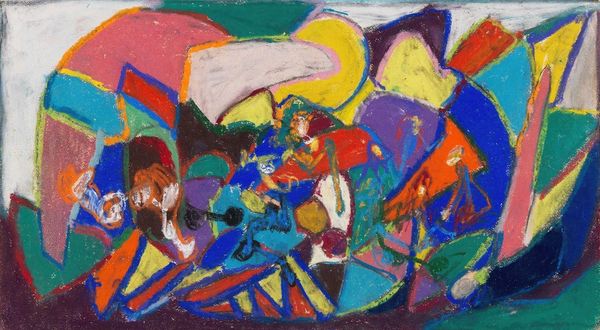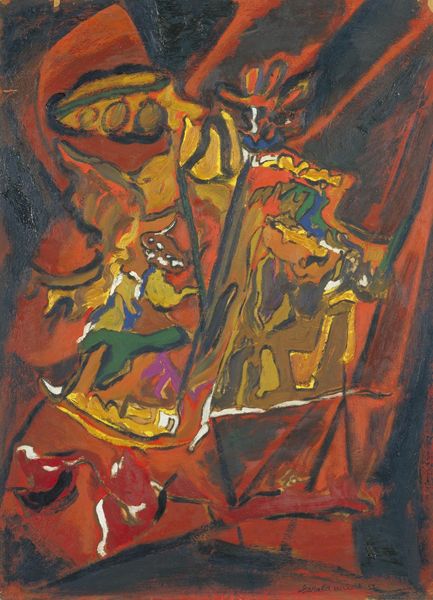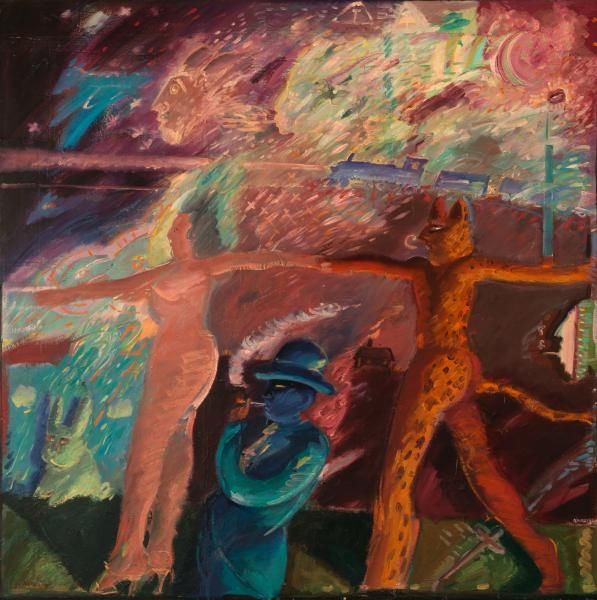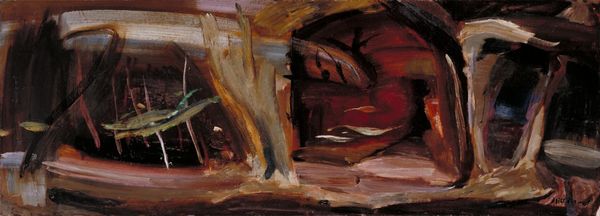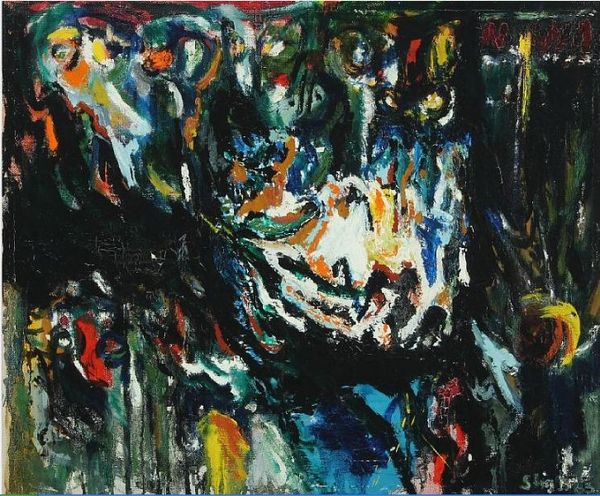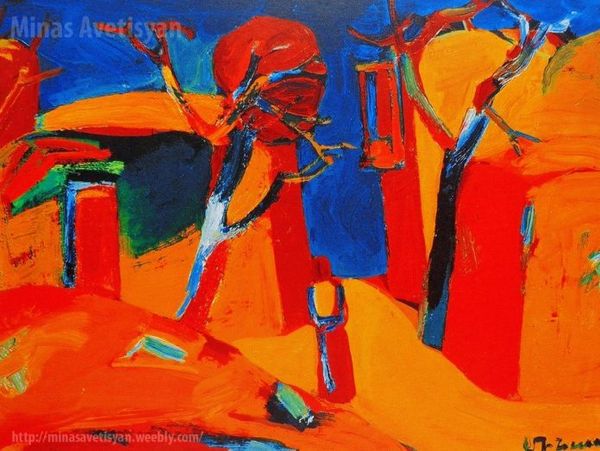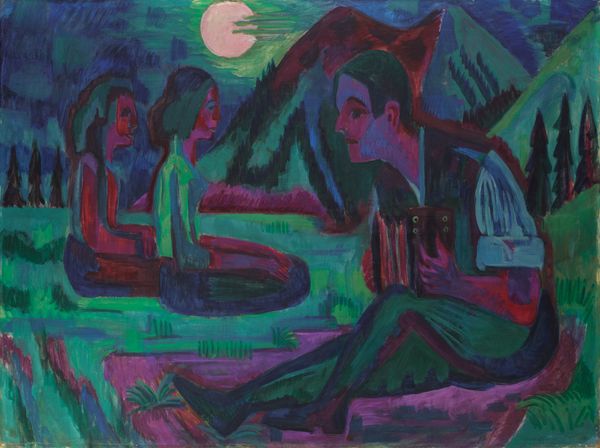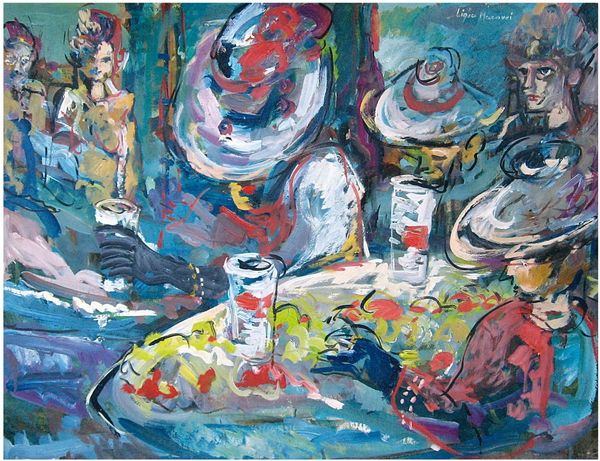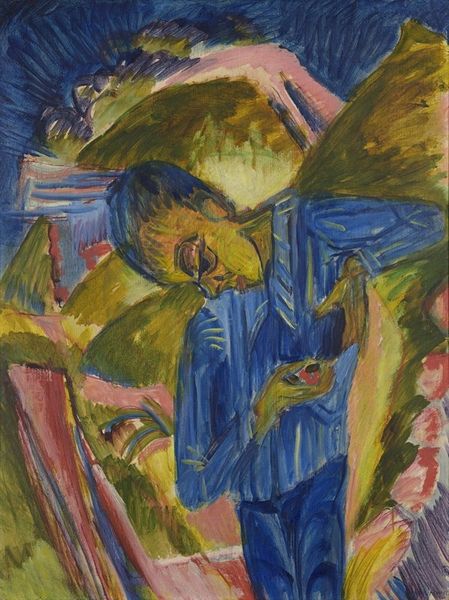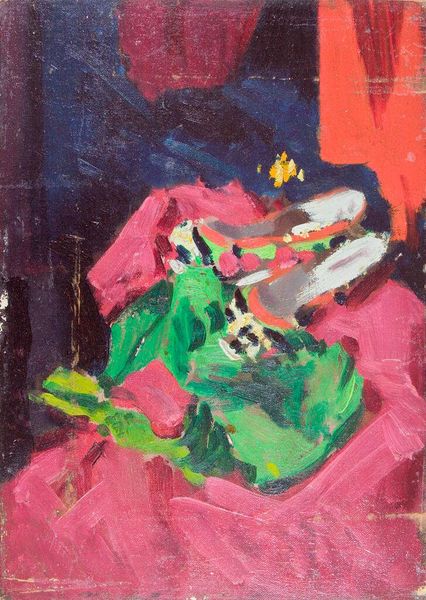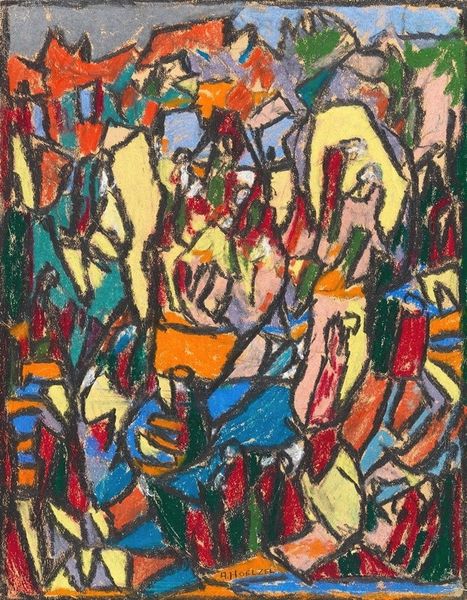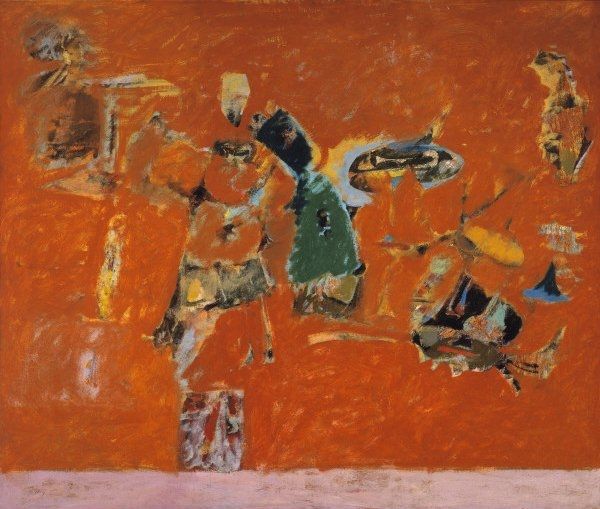
painting, oil-paint
#
fauvism
#
fauvism
#
painting
#
oil-paint
#
landscape
#
geometric
#
expressionism
#
expressionist
Copyright: Public domain US
Editor: We’re looking at Auguste Herbin’s “Still Life with Lamp,” painted around 1905. The aggressive brushstrokes and vibrant hues… it feels very visceral. How does this Fauvist work strike you? Curator: Focusing on Herbin’s process and materials offers compelling insights. Look at the impasto, the thickly applied oil paint. What does this signify in terms of labor and production? Fauvism was a direct challenge to the academy's polished surfaces. Herbin revels in the raw materiality of paint itself, calling attention to the act of making. What do you make of the color? Editor: The colors are so unnatural – bright red table, deep blue lamp, almost clashing. Is it simply decorative? Curator: No, not at all. These aren’t decorative choices; they represent a deliberate disruption. Considering the period, the late industrial revolution, we might view these colours as signifiers of newly available artificial pigments. Cheap to manufacture, available to anyone… How does this inform our understanding of art, of taste? Editor: So, it's less about beauty and more about commenting on material culture and challenging pre-conceived standards? Curator: Precisely! This piece becomes a social commentary through the very pigments chosen and how they're applied. Look also at the support, at what material did he work on? Is it low quality or luxurious canvas? All elements indicate production values. Editor: Fascinating! I always considered Fauvism about color and emotion, but I see it's rooted in a tangible reality too. Curator: Exactly! And by interrogating this relationship, we enrich our experience of the work.
Comments
No comments
Be the first to comment and join the conversation on the ultimate creative platform.
